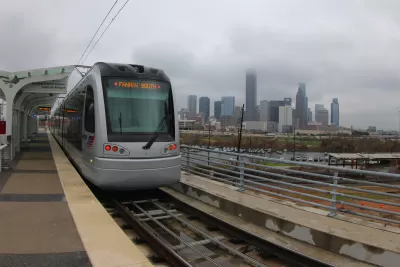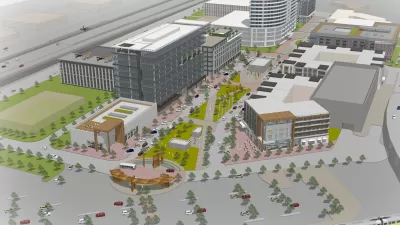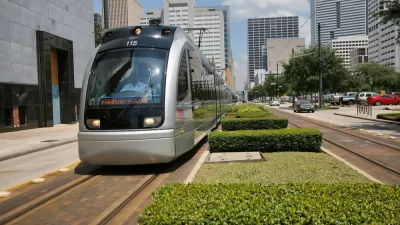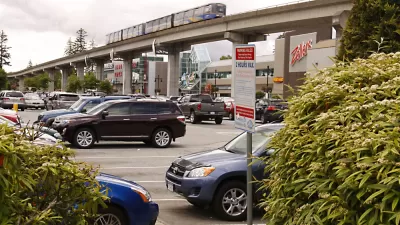Dallas and Houston's expanding light rail systems are helping boost economic development as new commercial and residential development sprouts up around transit stations.

PBS Newshour looks at the growth of light rail systems in Texas, which is luring some drivers from their cars in the sprawling cities of Dallas and Houston. And while the reduction of drivers is a good thing, the cities are also focusing on the economic benefits of transit oriented development that is popping up around new light rail stations.
Reporter Karla Murthy spoke with developer Walt Mountford who is building a large mixed-use project adjacent to a transit station in the Dallas suburb of Richardson. Mountford notes that this type of development, placing restaurants, offices, and hotels adjacent to the light rail station makes the employers located in the development more attractive to young workers.
Houston urban planner and Metro board member Christof Spieler tells Murthy that the introduction of the light rail system has been a boon to Downtown Houston.
"KARLA MURTHY: He believes light rail has been a catalyst to Downtown development, with $8 billion of projects along a seven and a half-mile stretch of track.
For example, look at the neighborhood of Midtown in the heart of Houston. Across from the light rail station there’s a mixed-use development under construction with 363 apartments and 30,000 square feet of retail space.
CHRISTOF SPIELER: This isn’t some empty field on the outskirts of town that gets a new development. It’s a neighborhood like this. We’re seeing a real shift in the kind of places people want to live in. Neighborhoods that have not just homes but places to eat and places to shop are fun to live in. I mean, there’s a real change in the attitude toward cities."
FULL STORY: In car-centric Texas, cities reap economic boon from light rail

Alabama: Trump Terminates Settlements for Black Communities Harmed By Raw Sewage
Trump deemed the landmark civil rights agreement “illegal DEI and environmental justice policy.”

Study: Maui’s Plan to Convert Vacation Rentals to Long-Term Housing Could Cause Nearly $1 Billion Economic Loss
The plan would reduce visitor accommodation by 25% resulting in 1,900 jobs lost.

Why Should We Subsidize Public Transportation?
Many public transit agencies face financial stress due to rising costs, declining fare revenue, and declining subsidies. Transit advocates must provide a strong business case for increasing public transit funding.

Paris Bike Boom Leads to Steep Drop in Air Pollution
The French city’s air quality has improved dramatically in the past 20 years, coinciding with a growth in cycling.

Why Housing Costs More to Build in California Than in Texas
Hard costs like labor and materials combined with ‘soft’ costs such as permitting make building in the San Francisco Bay Area almost three times as costly as in Texas cities.

San Diego County Sees a Rise in Urban Coyotes
San Diego County experiences a rise in urban coyotes, as sightings become prevalent throughout its urban neighbourhoods and surrounding areas.
Urban Design for Planners 1: Software Tools
This six-course series explores essential urban design concepts using open source software and equips planners with the tools they need to participate fully in the urban design process.
Planning for Universal Design
Learn the tools for implementing Universal Design in planning regulations.
Smith Gee Studio
Alamo Area Metropolitan Planning Organization
City of Santa Clarita
Institute for Housing and Urban Development Studies (IHS)
City of Grandview
Harvard GSD Executive Education
Toledo-Lucas County Plan Commissions
Salt Lake City
NYU Wagner Graduate School of Public Service





























